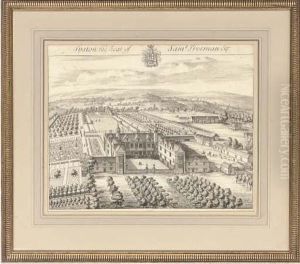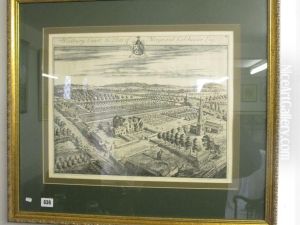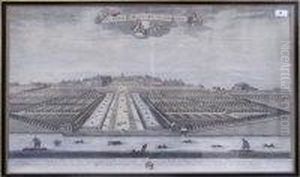Jan Kip Paintings
Jan Kip was a notable Dutch engraver and artist, primarily recognized for his significant contributions to the world of topographical art during the late 17th and early 18th centuries. Born in the Netherlands in 1653, Kip's work is emblematic of the era's fascination with detailed and accurate depictions of landscapes, estates, and gardens, reflecting the socio-economic and cultural landscapes of his time.
Kip is particularly renowned for his collaboration with Leonard Knyff, a fellow artist, with whom he produced 'Britannia Illustrata', a groundbreaking work published in the early 18th century. This work is a collection of aerial views of English and Welsh estates and gardens, which was highly acclaimed for its meticulous detail and artistic quality. The engravings in 'Britannia Illustrata' are considered some of the most important topographical representations of the period, offering invaluable insights into the architecture, garden design, and land use of the era.
Throughout his career, Kip's work was characterized by its precision and attention to detail. His engravings served not only as works of art but also as documents of historical and cultural significance, capturing the grandeur of the English countryside and its estates during a period of profound change and development.
Jan Kip's legacy extends beyond his contributions to topographical art. His works have served as a critical resource for historians, architects, and landscape designers, providing a window into the past and inspiring future generations. His death in 1722 marked the end of a prolific career, but his works continue to be celebrated for their beauty and historical value, securing his place in the annals of art history.


